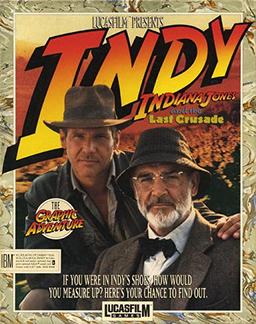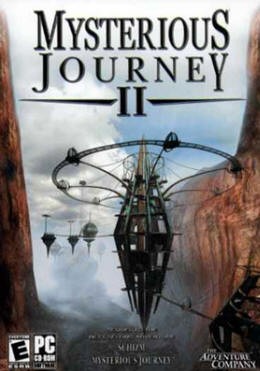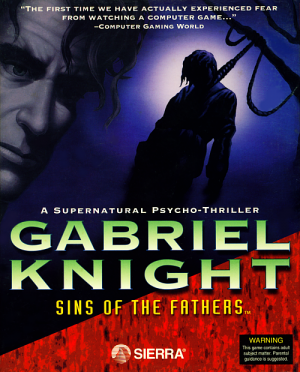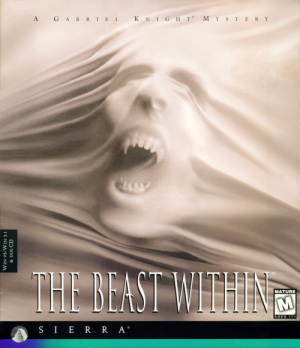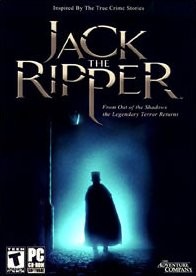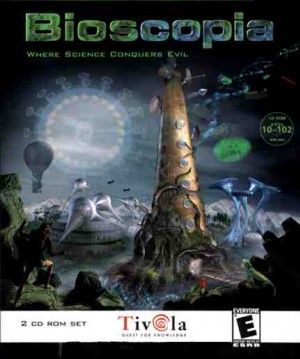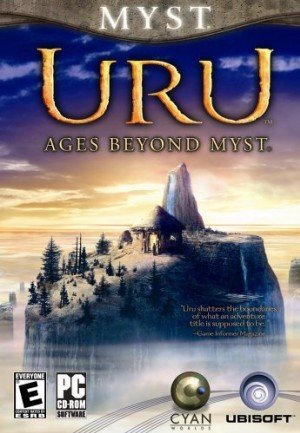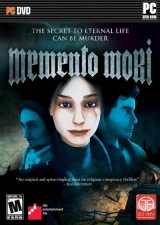Review for King’s Quest VI: Heir Today, Gone Tomorrow
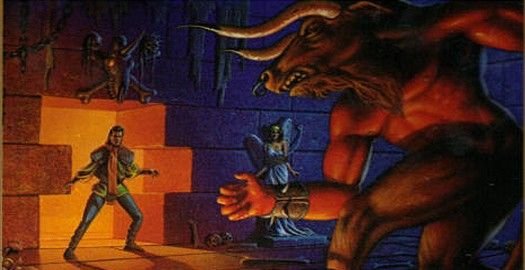
The last time we checked in with Alexander, prince of Daventry and heir to the throne, he’d just been freed from the clutches of the evil wizard Mordack, along with the rest of his family and a pretty girl named Cassima. King’s Quest VI opens to reveal the forlorn prince sitting by his parents’ thrones, his head in his hands, pondering his lot in life. In the cutscene that follows, we learn that the young prince is plagued by an age-old problem: he’s in love. Alexander has been haunted by his memory of Cassima ever since they parted at Mordack’s castle. Just then, he happens to glance into the magic mirror his father recovered during the very first King’s Quest adventure. Through the enchanted glass he sees a beautiful woman trapped in a tower, waiting for rescue. It’s Cassima, and she’s calling his name! Inspired by the vision, Alexander sets out on a ship to travel to the Land of the Green Isles and get the girl.
If this sounds suspiciously familiar, that’s because it’s almost identical to the opening of King’s Quest II, one generation later. Thankfully, this is where the similarities end. King’s Quest VI: Heir Today, Gone Tomorrow is anything but a rehash of its predecessors; in fact, after a decade of trying, it’s the game Sierra finally got almost completely right.
I say this because Heir Today, Gone Tomorrow is the only KQ game to strike a perfect balance between engaging puzzles and an enthralling, well-crafted story. Puzzles were always abundant in the KQ games (although they did mature considerably as the series evolved), but story was ever problematic. The very early KQ games had skeletal stories tacked on as an afterthought, and although the later ones took story more seriously, these often felt awkward and contrived. In King’s Quest VI, story is finally given the spotlight it deserves, with all those devices that make a story satisfying: setup, plot and character development, tension, and a heightened climax and satisfying conclusion.
This probably has something to do with long-time King’s Quest designer Roberta Williams teaming up with a newcomer named Jane Jensen for this installment in the venerable series. Roberta Williams was a designer; Jane Jensen, a writer. It was Roberta’s first shared credit on a KQ game, and in the opinions of many who cite KQVI as the best in the series (myself included), this partnership is the reason the game is so damn good.
The game opens with Alexander stranded on the shore of the Isle of the Crown, his ship wrecked against the rocks and his crew nowhere to be found. Lucky for him, he has landed on the same island where Cassima is being held. Unlucky for him, Abdul Alhazred, the vizier who took control of the throne while Cassima was Mordack’s hostage, won’t let Alexander see her. Thwarted in his quest before it has barely begun, Alexander goes to the town square and learns from the locals of a recent unrest that has spread across the land. Now Alexander must right wrongs throughout the Land of the Green Isles, to procure the ammunition and alliances he needs to rescue Cassima and bring down the evil vizier.
King’s Quest VI gets off to a bit of a slow start, with a lot of yammering between characters as the plot is established. This speaks to the game’s extensive backstory—there’s a lot of meat on the bones—but I think it’s also a side effect of the growing pains designers were still experiencing as they transitioned away from text-only games. The rhythm of the written word doesn’t always make for good dialogue, and when King’s Quest VI came out in 1992, even the best designers were still finding their footing when it came to writing for the talkies. Once Alexander figures out how to travel from island to island, though, the exposition takes a back seat and things start to really get good.
The Isle of the Crown is one of several islands that make up the Land of the Green Isles, along with the Isle of Wonder, the Isle of the Beast, and the Isle of the Sacred Mountain. Each island has a distinct visual and cultural influence. The Isle of the Crown’s buildings and inhabitants look like they’re out of Arabian Nights. The Isle of Wonder has an Alice in Wonderland feel, with a strange landscape and two chessboard queens who bicker over who’s in really in charge. The Isle of the Beast is a dark, forested land scattered with magical barriers, and the Isle of the Sacred Mountain is modeled after classic Greek and Roman mythology. (There are a few other locations in the game, with equally distinct atmospheres, but I don’t want to give them away!) The islands’ visual differences and the ease with which Alexander can travel between them makes the world feel large and diverse, but with the exception of the Isle of Wonder, which has several puzzles based on the island’s topsy-turvy logic, the gameplay on each of these islands is fairly similar. It’s not a huge complaint because there are plenty of story-supporting puzzles all the way through, but I do think the challenges could have been tailored to the environments a bit more.
King’s Quest VI has a point-and-click, icon-driven interface and traditional adventure gameplay, with conversations between characters playing a major role. The gameplay requires traveling between the islands to complete a number of small quests, with the ultimate goal of sneaking into Cassima’s castle to rescue her. As usual, many of the puzzles involve using collected items to befriend or appease other characters. There are also a few logic puzzles, and a set of challenges based on the text in the extensive manual, "Guidebook to the Green Isles," that accompanies the game—an organic form of copy protection, and an eternal source of frustration for people who obtain second-hand copies with the guidebook missing.
Timed puzzles and death scenarios are alive and well in King’s Quest VI, along with a handful of situations where you’re allowed to progress without something you need and have no way to go back and get it. None of this should come as a shock, since these annoyances have been present in every King’s Quest game leading up to this one, but with as many leaps forward as KQVI made in storytelling, I was almost surprised when I encountered them. Fortunately the timed puzzles are few and far between, and if you hit a dead-end, you can usually pick up the item you missed without a ton of backtracking, assuming you have been saving your game frequently (KQVI is more forgiving than some of the earlier games this way). On the plus side, the game has a few optional puzzles that have no detrimental effect if overlooked, but enrich the story if you discover them. Most of these involve getting Cassima’s attention, and if you’re a sucker for sappy love stories like I am, then you’ll want to seek them out.
A more significant aspect of the gameplay is the branching storyline, which presents the player with two entirely distinct paths leading to the ending. Depending on a choice you make partway through the game, you’ll end up on either the “short path” or the “long path.” In both cases the game ends the same way, but the story arc and puzzles leading up to the finale are completely different. The long path has quite a bit more gameplay and a much more satisfying conclusion, but it’s worth playing both if only to see the two possibilities, like watching a movie’s alternate ending on DVD. None of Sierra’s games had attempted this before, and sixteen years later, there are still very few games that offer it. If you’re playing for the first time, you won’t realize when you’ve passed the point of no return, but upon completing the game you’ll be given a hint about how to embark upon the path not taken, so you can restore from a saved game and experience the alternate ending. There are also a number of variables that can change the ending slightly, based on optional activities done during the game, that may leave the diligent player with the desire to keep replaying to find them all.
King’s Quest VI was initially released on nine floppy disks for DOS, Amiga, and Mac. All three versions boasted an elaborate 3D opening cutscene—a first in a Sierra game. The cinematic has a completely different visual style than the rest of the game that is not revisited, which makes it feel a little out of place overall, but it succeeds in kicking off the game in epic style. An updated “multimedia” version of KQVI was released in 1993 in DOS and Windows versions (both available on the same CD), with an extended version of the opening movie and full voiceover. The CD version is easiest to find today, either individually or as part of a collection. (The most recent collection, which can still be found in stores, installs the DOS version by default, but you can run the Windows version by applying a fan-made patch. Visit Vivendi’s message board to learn how.)
As a historical side note, the opening movie appeared in several slightly different versions across the game’s various platforms. The releases all featured the 3D cinematic to some extent, but the video was cut differently depending on the platform, and was framed by different narration. I played KQVI on a Macintosh at least a dozen times before I ever encountered it on a PC, and I personally prefer that version of the opening movie. The narration had a more romanticized, fairy-tale feel and Cassima never actually called out Alexander’s name, setting up a potential for unrequited love that’s lacking in the much more literal PC versions. The Mac version is now almost impossible to find, and even if you do stumble across it, it won’t play on modern Macs (not even in Classic mode), so you’ll have to take my word for it that it sent the player out on a subtly different, more romantic—and, from a storytelling perspective, more intriguing—iteration of Alexander’s quest.
The first KQ game to feature voice acting, King’s Quest V, unfortunately didn’t make a very good impression. I’m happy to report that the talkie version of KQVI is much better, most notably due to the participation of Hollywood actor Robbie Benson in the role of Alexander. In another improvement over the previous game, the options menu lets you toggle between speech and text, though you can’t play with both speech and subtitles at the same time.
The music is also high quality, particularly the haunting “Girl in the Tower” theme that plays as an instrumental whenever Alexander encounters Cassima, and returns as a full-fledged ballad during the closing credits. Encouraged by the recent trend of Disney movie themes ending up on the radio, Sierra recorded a version of King’s Quest VI’s love theme with lyrics and asked customers to request it from local radio stations, but the fan campaign had to be aborted when several stations threatened Sierra with legal action. From the impressive opening movie to the professional voice acting to this ambitious radio campaign, it’s clear that with King’s Quest VI, Sierra was attempting to raise their games to a higher level, on par with an animated feature film—an effort that carried over even more heavily into the next game in the series.
With the exception of the opening movie, King’s Quest VI has a hand-painted art style almost identical to KQV’s. The game’s backgrounds have a muted, pink and tan color palette that gives the environment a soft, regal feel. Sierra’s artists often experimented with perspective; for example, you peer into the bookstore over the tops of several books on a shelf. There are some amusing sprite animations, but most of the key cutscenes are delivered through close-up views of the characters with animations as simple and minute as a character blinking his eyes or pulling his sword a few centimeters from its sheath, only to push it back a second later. The close-ups are well-depicted, so I never felt that the scenes were lacking, but after the expectations raised by the fully rendered opening movie, a little more movement during the in-game cutscenes would have been nice.
The Windows version has some visual enhancements over the others, including a prettier icon bar and more detailed dialogue portraits. Although the higher-resolution portraits in the Windows version are more visually appealing, the details in these close-ups are sometimes at odds with the rest of the game art, which can be distracting. As an example, the main guard dog’s sprite has a white face and pink chest, but in his dialogue portrait his face is pink and his chest white.
Inconsistencies like this made me less excited about the so-called enhanced Windows version than I wanted to be, after years of hearing from other fans how superior it was. But in the grand scheme of things, this is a minor gripe, and if you’re experiencing the story for the first time you’ll probably be too engaged by what’s happening to really notice.
It’s hard to say if King’s Quest VI is the most ambitious game in the series, since each installment was ambitious in its own way, but it’s unquestionably the game that delivers on its ambition the most successfully. When it came out, this game didn’t just exceed expectations; it set a new standard for how high the quality of both storytelling and production values in an adventure game could be. Although the graphics are dated now, King’s Quest VI will still appeal to players today due to its timeless story, its well-developed characters, its memorable environments, and its epic cinematic opening and concluding musical number. I remember reaching the end of this game (twice!) and thinking that after this accomplishment, there would be no stopping Sierra. Sadly, that turned out not to be the case, and the mess that followed with King’s Quest VII and the company’s ultimate unraveling makes the magic of this game that much more bittersweet. After a decade of learning from their mistakes and building on their successes, Sierra finally gave us the ultimate King’s Quest game, and for that—regardless of what happened next—we adventure game fans owe the Sierra-that-used-to-be a debt of gratitude.











